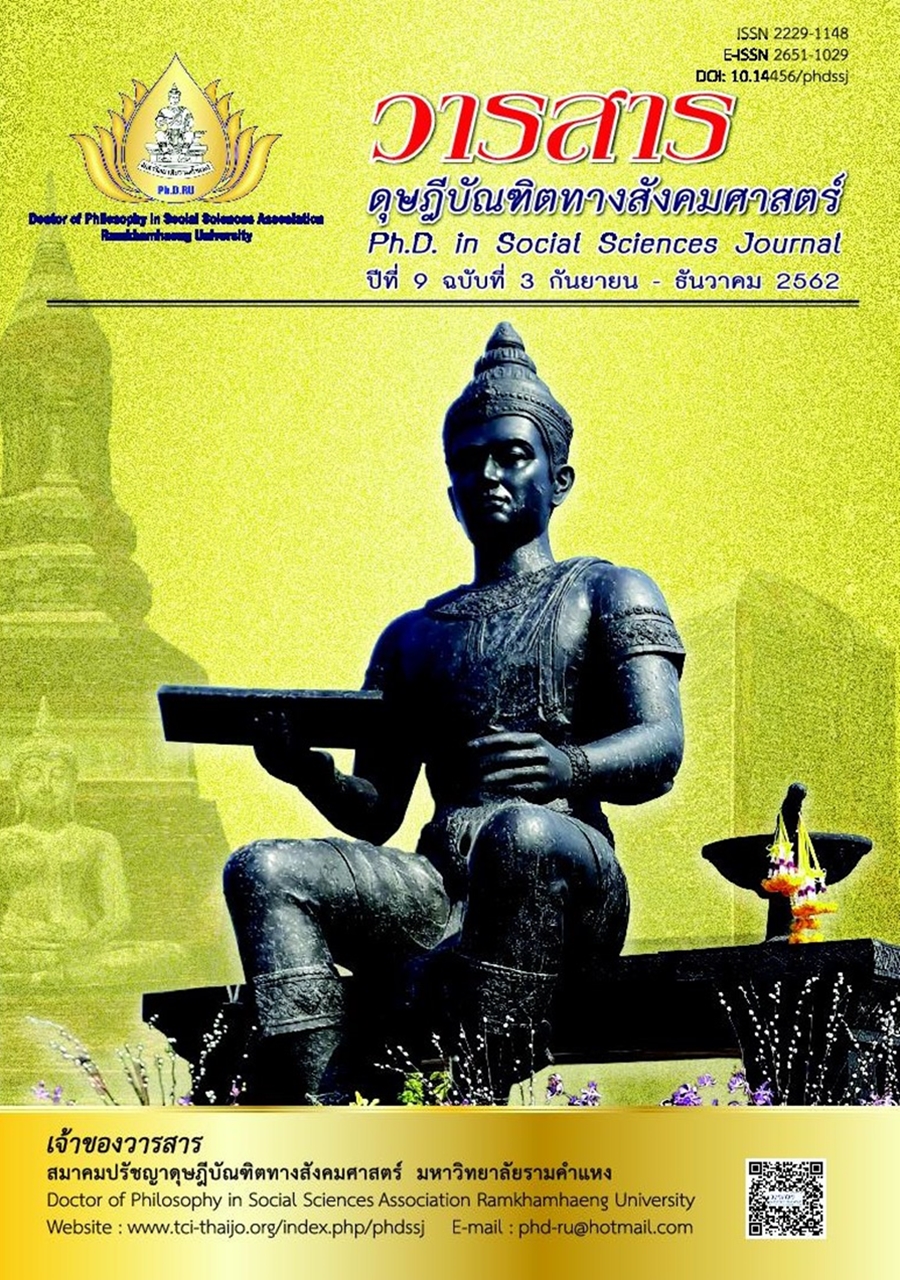Cultural Change and the Language and Dress of the Phu Thai Renu Nakhon Ethnic Group in the Northeast of Thailand
Main Article Content
Abstract
In this dissertation, the researcher examines (1) the original cultural conditions of the language and dress of the Phu Thai Ranu Nakhon ethnic group in the northeast of the Kingdom of Thailand (Thailand). (2) the current cultural conditions of the language and dress of this ethnic group. and (3) the process of cultural change in respect to the language and dress of this ethnic group. Furthermore, finally, the researcher determines. The target group consisted of 40 key persons.
Findings are as follows:
1. Language and dress The original Phu Thai Ranu Nakhon (1970-1974) is a family of Tai - Kadai language. Is a sub-group of Tai Dam language Most of them are in the upper northeast province. Man wearing sesame seed cloth, black eyes wearing local clothes. Black hair bun Woman wearing a skirt And wearing a shirt cut in black local cloth.
2. Language and dress, Phu Thai Ranu Nakhon is currently (1975 - present). Match the need to use words that suit the person’s position and timing, while the female dress wears the Indigo cylinder sleeve shirt and the red shirt. Silver buttons with a pair of belts wrapped in red cloth. Current Phu Thai Ranu Nakhon (1975 - Present).
3. Causal process of changing language and dressing Phu Thai Ranu Nakhon (1970 - present) Outside is caused by the influx of culture, society, economy, politics, history and various media. The inside is caused by the Phu Thai people wanting to change the language in the community of Phu Thai people. There are characteristics of pronunciation, vocabulary, forms and other characteristics that change with time, caused by people who use language to respond to social, economic, and political conditions.
Article Details
Academic articles, research articles, and book reviews in the Ph.D. in Social Sciences Journal are author’s opinions, and not the publisher’s, and is not the responsibility of the Ph.D. in Social Sciences Journal Philosophy Association, Ramkhamhaeng University. (In the case that research is done on human, the researcher has to be trained in Ethics for Doing Research on Human Training and has to produce the evidence of the training).
References
Barnett, H. G. (1953). Innovation: The basis of cultural change. New York: McGraw-Hill.
Benedict, R. (1934). Patterns of culture. New York: Houghton Mifflin.
Boonphila, N. (2016). Phu Tai wisdom cultural cuisine in Udon Thani Province. Journal of Community Development and Life Quality, 4(2), 224-234. [In Thai]
Darwin, C. (1859). On the origin of species. New York: New York University Press.
Friedl, J. (1981). The human portrait: Introduction to cultural anthropology. Englewood Cliffs, NJ: Prentice Hall.
Gumperz, J. J., & Hymes, D. (1972). Directions in sociolinguistics: The Ethnography of communication. Oxford, England: Basil Blackwell.
Scupin, R., & De Corse, C. R. (2004). Anthropology: A global perspective (5th ed.). Upper Saddle River, NJ: Prentice Hall.
Steward, J. H. (1955). Theory of culture change; The methodology of multilinear evolution. Champaign, IL: University of Illinois Press.
Theerasasawat, S., & Upaan, N. (1995). The change in way of Esarn family and community: A Phuthai case. Khon Kean: Khon Kean University, Faculty of Humanities and Social Sciences. [In Thai]
Thongchouy, C. (1991). Languages and dialects (focusing on the southern region). Bangkok: Odian Store. [In Thai]
Treeaekanukul, L. (2006). Adaptation to Thai culture and the effects of restrictions on rights on the quality of life of Tai Yai without Thai nationality in Chiang Rai Province. Doctoral dissertation of sociology, Ramkhamhaeng University. [In Thai]


